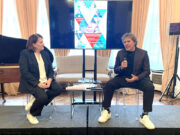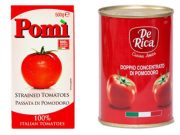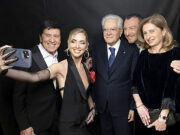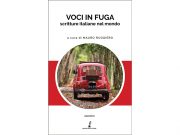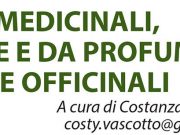I don’t pretend to be a chef, or even a food expert, but I do love eating. As a wine guy, I am fascinated by smells, tastes, textures and flavours. I am also fascinated by how food and wine go together, what really works and makes both taste better, and what dumbs down one or both. Interestingly sometimes a conflict between a wine and a food is really surprising and works wonderfully, but this is most often not the case. I will give you a couple of examples with Italian food.
I first visited Italy in the late 1960’s and with the family we were fortunate to visit most of the regions from Sicily and the deep south, many wonderful holidays around Naples, great times in Tuscany, we stayed often in the Villa San Michele in Fiesole, with wonderful views of Florence from the dining room terrace. We holidayed in Rome and the north right up to Venice the delights of Cipriani and a casual lunch looking over the lagoon at the restaurant Cips, on Lakes Como and Garda or up in the Dolomites at La Perla.Where-ever I have been lucky to visit I have always learnt one thing…. Always drink the local wine with the local food, no matter how tempting are the international dishes, or expertise of a great chef, or a wine list of wines from around the world.
People so often say to me ……” but if we bring a bottle home, it never tastes the same!” They may have a point, but do they know why? It is most often the food it is served with and how it is seasoned. It is also often the temperature that the wine is served, the glasses the wine is served it, the other smells, be that the sea, the woods, the mountains, or even the view! Dare I say it, it could also be the company and the occasion, so many things can influence us, we are all human after all!
Romantic dinners aside, whilst so many commentators will try to recommend light fresh white wines with fish, big gutsy reds with meat, light reds with chicken and pork etc.. So much of this is over general and often even wishful thinking – let me explain. The key to food pairing is basic and fundamental, first you have the smells and aromas, it is pretty often the easiest thing to get right, the citrusy lemon smell of a crisp white wine like for instance Frascati, Orvieto, Soave, Verdicchio with fish or seafood. Citrus goes with fish, like a squeeze of lemon. Or a super Tuscan blend of Sangiovese, Cabernet Sauvignon or Franc and Merlot from Bolgheri and the Maremma with its dark black and red berry fruit perhaps with red meat or game, sweet berry fruit goes with meat, particularly Lamb and game. No, that is relatively easy. It is when the food and the wines start to become more interesting. How much acidity? Is there a tomato sauce with fresh acidity, so the bright acidity in Chianti works. How much salt, is a little sweetness in the fruit of the wine the answer? Smoked fish with an Alto Adige Gewurtztraminer perhaps? Or a little sweetness in a sauce or reduction, a counterpoint of bone dry acidity maybe, good savoury and gamey intensity from a mature Barolo or Barbera perhaps? Anything spicey, again maybe a touch of residual sugar in the wine, maybe a Linguini alle Vongole, with a Fiano, or if meat, spicy sausage with a juicy red , say Primativo or Nero d’Avola?
Great Italian cheeses are so often best with wines with a slight counterpoint of fresh acidity. Parmigiano-Reggiano, crumbled as a mouthful with a crisp white as an aperitif, the fresh acidity countering the fattiness of the cheese and also the saltiness, to leave the mouth feeling ready for dinner! Blue cheese, Gorgonzola or Dolce Latte with a glass of Vin Santo perhaps? So often I prefer white wine with cheese, but I would always make an exception for an old Barolo or old Valpolicella Amarone, probably with a hard cheese like Pecorino or even a semi soft cheese like Fontina?
So finally to the most difficult wine to pair, and that is desert. So often the pudding is sweeter than the wine, which makes the wine taste tart, and the desert sickly sweet. The great and underrated, naturally low alcohol (5-6%), sweet Muscat Spumante sparkler from Asti, is wonderful with fruit, try Michele Chiarlo Moscato d’Asti for the real thing.
So my point is, concentrate more on the basic elements of both food and wine; salt, sugar, acidity, spice, fat and protein, and you won’t go far wrong. The texture can also be interesting, light or rich, thin or cloying and rich? And finally don’t be afraid to experiment, but remember, try to eat the local food with the local wine.
venerdì, Luglio 4, 2025
Welcome! Log into your account
Recover your password
SM La Notizia Londra da oltre 12 anni il punto di rifermento degli Italiani a Londra
SMPhotoNews - La Notizia Londra riceve i contributi previsti dalla legge per la stampa italiana all'estero
SMPhotoNews - La Notizia Londra riceve i contributi previsti dalla legge per la stampa italiana all'estero
Contact us: smlanotizialondra@gmail.com
© Copyright 2016 - Director Salvatore Mancuso
Credits: DOG ADV - Digital Marketing Agency in London
Credits: DOG ADV - Digital Marketing Agency in London


